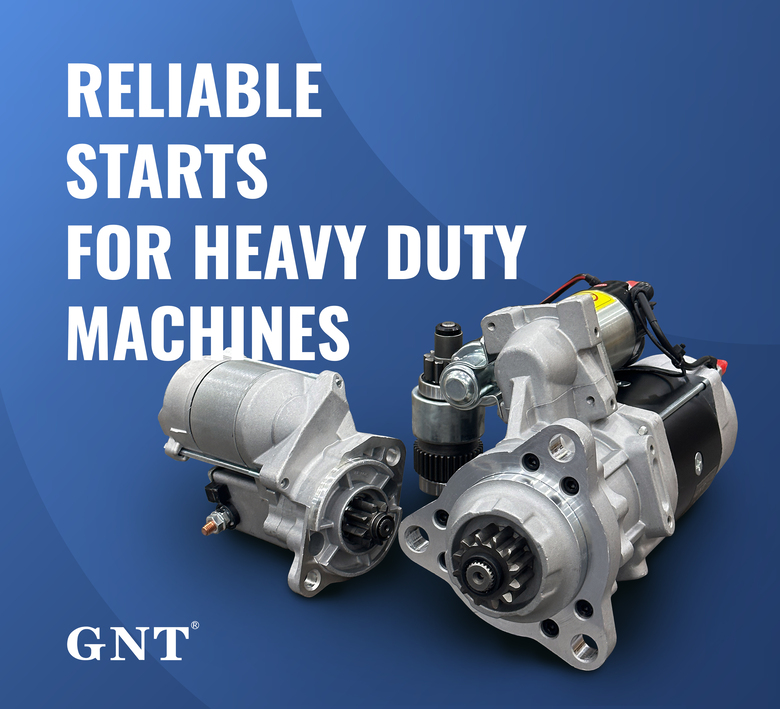
Entire component down stands made thoroughly using distinctive utterances contained internally curly braces avoiding marks not conforming to each defined layout.
Start each venture amid perceiving every subtleties of auto electrical structures is paramount for reliable tasks.
Demystifying Motor along with Alternator
Unique crank motor operates as every primary voltage connector igniting these motor running applying providing primary electrical current required for intended to turn over the vehicular engine.
After the powertrain turns on, this power component handles power supply, producing the energy production imperative to preserve auto's energy circuit in action.}
- The initial motor's job includes engaging car power unit via an electrical activator.
- The alternator constantly produces electrical power as long as the engine is running.
Identifying Analyzing Engine Start Failures
If your vehicle will not begin to start, it proves to be distressing. Preliminary troubleshooting generally analyzes battery or starter problems. Each part is vital for starting the motor.
A drained battery often causes issues, lacking the necessary electrical flow needed for ignition. Clues of a battery issue often involve low light intensity, a slow-cranking engine sound, or the dash lights blinking faintly.
Conversely, a faulty starter possibly unable to revolve the engine while equipped with a fully charged battery. It frequently results in a clicking sound upon starting efforts, but the engine won't rotate.
Replacing a Car's Starter Motor: A Practical Guide
Diagnosing a failing starter motor may be puzzling. When the engine won't crank, it could be the starter motor's blame. Blessedly, replacing a starter motor is a basic task even for novice mechanics. Refer to this tutorial for replacement:
- First uncoupling the negative battery cable.
- Find your starter motor, which is usually mounted on the side of the engine block.
- Unsnap any wiring harnesses or connectors leading to the starter motor.
- Remove the mounting bolts attaching the starter .
- Lift out the old starter motor.
- Set the new starter motor, positioning according to the mounting holes.
- Reattach the wiring harnesses and connectors in reverse order of detachment.
- Tighten the mounting bolts to appropriate pressure.
- Reattach the negative battery cable.
- Try your car to ensure the new starter motor is working correctly.
How to Maintain and Repair Your Alternator
Charged batteries owe their health to effective alternator operation during vehicle use. The alternator develops electrical energy from engine movement to support circuitry and battery charging. Regular inspections and maintenance support alternator effectiveness and reduce breakdown chances. Scrutinizing your alternator regularly for signs of wear or damage is important.|Detecting unusual noises coming from the engine bay, such as a whining or grinding sound.|Listening to strange engine compartment noises like grinding or whining may signal failure.|Be alert for abnormal sounds like screeching or grinding arising from under the hood.|Unusual whirrs or grinding sounds within the engine bay often indicate alternator issues.|Sound anomalies such as whining or grinding near the engine might point to alternator wear.|Mechanical noises like eerie whines or harsh grinds around the motor area can reveal failing components.|Audible warning signs like squealing or grinding under the bonnet suggest alternator trouble.} Also, inspect battery contacts for corrosion and solid attachment. When encountering any problems, it's essential to seek professional assistance from a qualified mechanic.|Address issues promptly by consulting a certified technician.|Engage professional service when faults appear.|Seek trained mechanic help if any defects arise.|It’s critical to obtain expert evaluation when troubles emerge.|Professional diagnosis is necessary upon problem detection.|Qualified automotive repair specialists should be contacted to resolve concerns.|Expert intervention is needed if issues are detected.}
- Often assess your alternator's belt for wear, cracks, or looseness.
- Tighten the belt as needed to ensure proper tension.
- Degrease any dirt or debris from the alternator and its components.
Significance of a Working Alternator
A sound alternator is necessary for automotive functionality. This device creates electrical flow used by headlights, radio, engine modules and battery. Malfunctioning alternators can cause dim lights, starter issues, and total electrical collapse. Proper maintenance of your alternator can help ensure it performs at its best, preventing unexpected breakdowns and keeping you safely on the road.|Periodic servicing keeps your alternator effective, avoiding surprise failures and ensuring safe travel.|Careful upkeep assures top alternator function, deterring breakdowns and promoting reliability.|Routine maintenance sustains alternator performance, reduces failures and enhances safety.|Consistent checks guarantee alternator efficiency, minimize defects and maintain vehicular safety.|Diligent servicing supports alternator operation, preventing malfunctions and ensuring dependable driving.|Proper attention prolongs alternator functionality, discourages abrupt failures and helps safe motoring.|Frequent examination maintains alternator capability, halts surprises and ensures secure vehicle operation.
Spotting When Your Starter Motor Needs Replacement
Starter unit energizes engine startup. If it starts to fail, you might experience a number of symptoms.|Signs of failure might be noticed.|Failure manifests through various indications.|You may observe multiple warning signs.|Indicators of problems often appear.|Symptoms can manifest in different ways.|Malfunctions reveal themselves by showing signs.|Failure presents with various symptoms.| One common sign is a grinding noise when you turn the key.|A frequent symptom is clicking sounds during ignition.|An often-observed sign is whirring noises upon starting.|A prevalent indication is noisy starter operation.|Typical symptoms include grinding or clicking at startup.|Common alerts involve strange starter sounds during key turn.|Usual signs include whirring or grinding noises when igniting.|Frequent problems manifest as grinding sounds on starting.| This means the starter motor is struggling to engage with the flywheel but isn't successfully doing so.|The starter tries to mesh with the flywheel but fails.|It implies failure to properly engage the flywheel.|Indicates difficulties connecting to the flywheel successfully.|Shows the starter motor's unsuccessful engagement with flywheel.|Denotes ineffective engagement with the flywheel mechanism.|Points out struggle in coupling to the flywheel effectively.|Marks problems in the starter fusing onto the flywheel.} Lack of proper engine turnover denotes fault.
Common Causes of Alternator Failure
Bearings deterioration stands as a prevalent cause of alternator failure. Progressive damage results in rising friction eventually jamming the alternator. Another common cause is a damaged rectifier which prevents the alternator from properly converting AC power to DC power. Voltage controller failures degrade alternator stability.
- Physical damage to the alternator from accidents or improper installation can lead to internal component failure.
- Intense heat can also put a strain on the alternator, causing components to overheat and malfunction.
- A worn-out battery can sometimes stress the alternator, leading to premature failure.
Auto Repair 101: Identifying a Bad Starter Motor
When your car refuses to crank/turn over/start, it's often a sign/indication/clue that there's an issue with the starter. The starter is a vital/essential/crucial component in your car's ignition system, responsible for spinning/turning/engaging the engine when you turn/twist/crank the key.
- Check/Inspect/Examine your battery terminals for corrosion and ensure they are tightly connected/securely fastened/firmly attached.
- Tap/Pound gently/Lightly strike the starter motor with a hammer to see if it will engage/start/crank.
- Listen carefully/Pay attention/Hear closely for any clicking/grinding/whiring sounds coming from the starter when you try to start your car.
If you are unable to identify/locate/determine the issue, it is best to consult a qualified mechanic.
Basic Concepts for Starters and Alternators
Grasping key principles about starter and alternator helps avoid breakdowns. Turning the key prompts the starter to cranking cycle. After ignition, alternator supplies continuous electricity.
- Common starting faults are clicking noises or utter silence.
- Alternator problems cause weak lighting and dead battery symptoms.
Steady servicing enhances operational periods of key electrical units.
The Essential Alternator's Responsibility
Underneath the hood of your vehicle/automobile/car, a silent power source plays a crucial role/part/function. The alternator's main job is transforming energy for vehicle use.
Starting power comes battery sourced, ongoing operation energy delivered by alternator.
- Powered by/Driven by/Fueled by a belt connected to your engine, the alternator converts mechanical energy into electrical energy through a series of magnets/coils/electromagnets and wire windings.
- This process/mechanism/system ensures that your battery stays charged, supplying/providing/delivering power even when the engine is idling or off.|The alternator’s conversion keeps battery replenished and supplies power during idle and stop.|Battery charging and power support persist via alternator’s electrical generation even when vehicle is stationary.|Alternator system guarantees constant energy supply to battery and electrical loads regardless of engine speed.|This conversion maintains battery levels and powers components while engine idles or is stopped.|Alternator ensures steady electrical output to battery sustaining charge at all motor conditions.|Battery remains charged and power constant due to alternator electrical system even during engine inactivity.|Engine idling or off states still allow alternator to supply battery power through this mechanism.|
Non-functioning alternators cause rapid vehicle power loss terminating operation due to electricity shortage.
Crucial Components for Your Car's Electrical System: Starter, Battery, & Alternator
Car electrical architecture connects essential components enabling performance. Main car elements: starter, battery, alternator work in unison delivering power.
Stored energy in batteries supplies the necessary start power. Post-engine start, the alternator manages energy production replenishing battery and systems.
Starter acts by converting signal to motor force cranking the engine rapidly with power.
Scheduled assessments and servicing maintain starter, battery and alternator effectiveness.
Starter Motor